INTRODUCTION
Indigenous Technical Knowledge (ITK) is the knowledge that an indigenous community holds collectively in their minds, which is then manifested through their practices and beliefs; as well as used by them in day-to-day life while addressing/solving some of their practical problems. This is the knowledge that is accumulated through generations of trial and error by the people. ITK forms an important component of the life of rural people, especially in the farming community. The farming community, in spite of the latest technologies and advancements, still has strong faith in their traditional knowledge. But with the passing of time the younger generation is showing less faith in ITK as scientific methods are far more ‘tested and true’ in terms of credibility. The beliefs of this generation, along with the modernization effect, have led to a negative impact on ITK and its use. This has, therefore, led to a diminishing of this knowledge from traditional cultures, over which hangs the threat of eventual, permanent loss.
| Indigenous Technical Knowledge(ITK) It is a community-based functional knowledge system developed, preserved and refined by generations of people through continuous interaction, observation and experimentation with their surrounding environment (Pushpangadanet. al. 2002). This traditional knowledge is based on the necessities, instinct, observation, trial and error and long experience of the indigenous societies of different regions (Majhi 2008). |
Role of ITK in livestock rearing
ITK plays a crucial role in both agriculture and livestock rearing in risk prone and poorly developed areas. ITK acts as a first aid or emergency prescription to people who have no immediate access to formal veterinary facilities. Moreover these locally available, home-made preparations make them cost effective and easy to administer. ITK is also a god send for these small and marginal farmers who are not able to afford formal drugs for their animals due to its prohibitive cost. Many people living in rural-urban fringes are giving up livestock rearing due to high risk of animal diseases and the cost of treatment thereafter. ITK provides an edge to these resource-poor farmers in terms of animal rearing. These indigenous practices are considered as a holistic approach to livestock management and are adopted by non-literate cultures. For local communities indigenous knowledge is an inseparable part of their culture and history (Ghosh and Sahoo 2011).With regard to the principle of adaptability, ITK are time tested and reliable to the farmers using them, and hence adaptable to their local conditions and socially acceptable. There is no threat of side effects, withdrawal effects, or the presence of undesirable residues in livestock products.
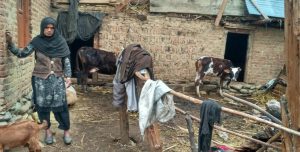 Tribals rearing a variety of livestock species depend mainly on ITK
Tribals rearing a variety of livestock species depend mainly on ITK
Threat to ITK
As the world is moving fast modern and quick-fix approaches appeal to the eye. ITK being slow in bringing relief is losing its importance. Animal rearing patterns are also changing; today’s farmers are generally rearing crossbred animals. In this situation ITK is less effective; moreover livestock farmers are also not ready to risk the lives of their costly animals by treating them with indigenous practices.
ITK is slow in bringing the desired effect, and this is further compounded by the vague diagnosis of diseases by farmers themselves, that can then prove life threatening to the animal. Moreover there is decreasing availability of the plants or herbs used in ITK. The tracts of land where these herbs are grown are dwindling due to urbanization and deforestation, leading to the extinction of these valuable resources in time. ITK, once a practice known to every livestock farmer, is fading from the memories of
farmers and is now confined to certain old individuals in the communities or to certain migratory tribes of the country. There is continuous uprooting of untapped resources from their native habitats due to social, economic and political factors that can lead to loss of indigenous knowledge (Girach 2007).
The people who still use and practice ITK for the daily needs of their livestock can be counted on one’s fingers and the passing of this knowledge to the next generation is stagnant as the younger generation is least interested in knowing and applying these ancient practices.
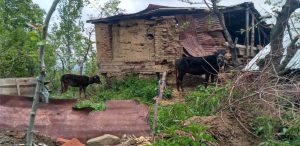 Extensive rearing of livestock in far-flung areas of Kashmir through the use of the herb Urticadioica, called ‘Sui’ in the local language. This herb is used in treating sprains and injuries in animals.
Extensive rearing of livestock in far-flung areas of Kashmir through the use of the herb Urticadioica, called ‘Sui’ in the local language. This herb is used in treating sprains and injuries in animals.
ITK, an important component of livestock rearing for shepherds
In some of the northern states of India, such as Jammu and Kashmir, and Himachal Pradesh, livestock herders pasture their animals in the higher reaches of mountainous areas far away from human habitations for certain months of the year and it is then that ITK becomes the savior of the livestock. Shepherds are the mobile treasure houses of ITK who are able to treat and rear livestock in these months wholly by depending on their knowledge of this traditional method. They also discover and re- discover the traditional treatments and modify then on a ‘trial and error’ basis. These areas are generally inaccessible and the presence of formal veterinary facilities is almost nil. These regions are also rich in the herbs that are the ingredients for self-treatment. Again with the intensive rearing of livestock the migration of livestock is decreasing and remains confined again to certain Bakarwal tribes. Seeing a diminishing trend in the use of ITK efforts are needed to document and preserve these precious resources which can have far more benefits than just relief for animal ailments. Research on these ITK preparations is the need of the hour as harm arising from drug resistance and side effects of formal medicines is increasing.
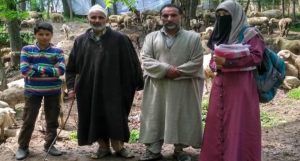 Interaction with shepherds on the use of ITK in animal rearing
Interaction with shepherds on the use of ITK in animal rearing
Need to document and preserve ITK
Modern medicine that was once thought to solve all the problems related to human and animal health is presently facing many challenges. Side effects, drug resistance and other problems has raised many questions on its use (Devaki and Mathialagan 2015).There is certainly no doubt that modern medicine has revolutionized medical treatment but it is important to take the traditional healing system along with it. By integrating traditional and modern scientific knowledge an extensive range of new ideas and practices can be generated for the betterment of mankind (Mishra et. al. 2011). But this correlation and integration can only be achieved once documented information about ITK is available.
Documentation of ITK will help to improve the livelihood of ITK holders who are frequently poor and marginalized by society; and it will also contribute towards improving the national economy. There is continuous uprooting of untapped resources from their native habitats due to social, economic and political factors that can lead to loss of this indigenous knowledge (Girach 2007).The recognition, preservation and protection of traditional knowledge can play a great role in safeguarding biodiversity, intellectual diversity, and environment on the one hand, and will prevent bio-piracy on the other (Jena 2007; Gupta 2008).
Conclusion
ITK is the heritage of any local community that practices it. The use of ITK has decreased and has remained confined to just a small section of tribals and pastoralists. With growing negligence a part of this treasure is getting buried under the name of modernization. There is an immediate need to recognize the importance of ITK, and serious steps need to be taken for its documentation, preservation, and validation.
References
Devaki K. and Mathialagan P. (2015.)Animal husbandry traditional knowledge in Kancheepuram district.
InternationalJournal of Science, Environment and Technology 4(5):1289-1295.
Girach RD. (2007.) Methods of documenting indigenous knowledge. The Tradition 04:24-30. Gosh PK. and Sahoo B. (2011.) Indigenous traditional knowledge. Orissa Review 65-70.
Gupta VK. (2008.) Protection of traditional knowledge. Dhishana. National conference on streamlining India’s traditional knowledge towards formulating a sui generis regime. May 23-25, Thiruvananthapuram. Pp. 49-61.
Jena M. (2007.) Community health knowledge register. The Tradition 5 :6-10.
Mishra OP., Singh AK. and Kumar S. (2011.) Indigenous knowledge of Bihar farmers. Journal of Community Mobilization and Sustainable Development 6(1):46-49.
Pushpangadan P., Rajasekharan S. and George V. (2002.) Indigenous knowledge and benefit sharing- A TBGRI experiment in IK strategies for Kerala. Thiruvananthapuram: NSE Publication. Pp. 274-279.

ITK (Indigenous Technical Knowledge) plays an important role in the day-to-day life of rural people. But with every passing day – as we head towards greater modernization – ITK is losing its importance and relevance, getting slowly confined within a small segment of the population. We need to address this issue, argues Sheikh Shubeena.

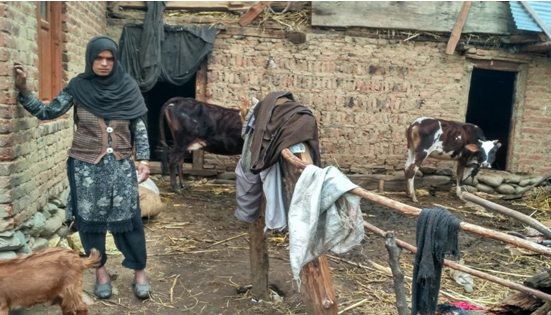
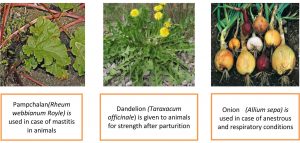

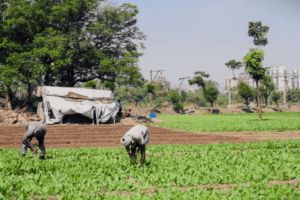

I appreciate the concern of Dr.Sheikh Shubeena for the poor status of the ITK in our society and I compliment her for coming out with a useful blog on it. The main reasons for this poor status are: 1. We scientists look for scientific validation of the ITK and we do not give any value for Social acceptance or validation as pointed out by Dr.Rangnekar. 2. In the past advocating and or practicing ITK is not a livelihood option for the traditional healers. They used to do it as a service without seeking any benefits. Now we look for material benefits and the practice of allopathy/ayurveda/homeopathy offers better scope for material benefits than ITK. 3. As is known ITK is more popular in rural areas where modern methods of treatment are not accessible. I know many of my veterinary colleagues employ indigenous treatment methods when modern methods of treatment fail. Mainly because the veterinarians are looked down by the farmers if they resort to indigenous medicines especially in crossbreds as indicated by the author. Traditional means backward and those who follow are considered as backward. But of late the Vets are resorting to alternate medicines because of their realisation of the negative consequences of the modern medicine as indicated by Dr.Rangnekar. 4. It is on record that the traditional practice of boiling milk (even if it is pasteurised) and meat is protecting us from many health hazards. 5. I participated in the international workshop organised by Dr.Rangnekar at BAIF, Pune sometime in 1995/96. The proceedings of this workshop should have been quoted in the references. Lot of useful work is going on documentation, validation and recognition to the traditional healers under the dynamic leadership of Dr.Anil Gupta at National Innovation Foundation, Ahmedabad. The field trials on Herbal anthelmintics are found to be highly effective. 6. NGOs like BAIF, SEWA are also actively involved in this process of popularising ITK.I agree with the comment/ suggestions given by Dr.Rangnekar
I wish to draw their attention to the increasing concern about development of resistance in micro-organisms as well as Parasites as well as about residues in tissue and products of livestock and poultry due to indiscriminate use of drugs. There is growing interest in study of Alternate Ways of dealing with disease causing organisms using Ethno-Medicine. I may mention that an Institute at Yelahanka near Bangaluru doing excellent work with Humans and Animals taking this approach. A group of Vets in Netherlands is working on drastically reducing use of antibiotics using herbal products. I will repeat that I wish these young scientists continue to work on alternate approaches to lowering cost of Livestock and Poultry production and making it safer for consumption